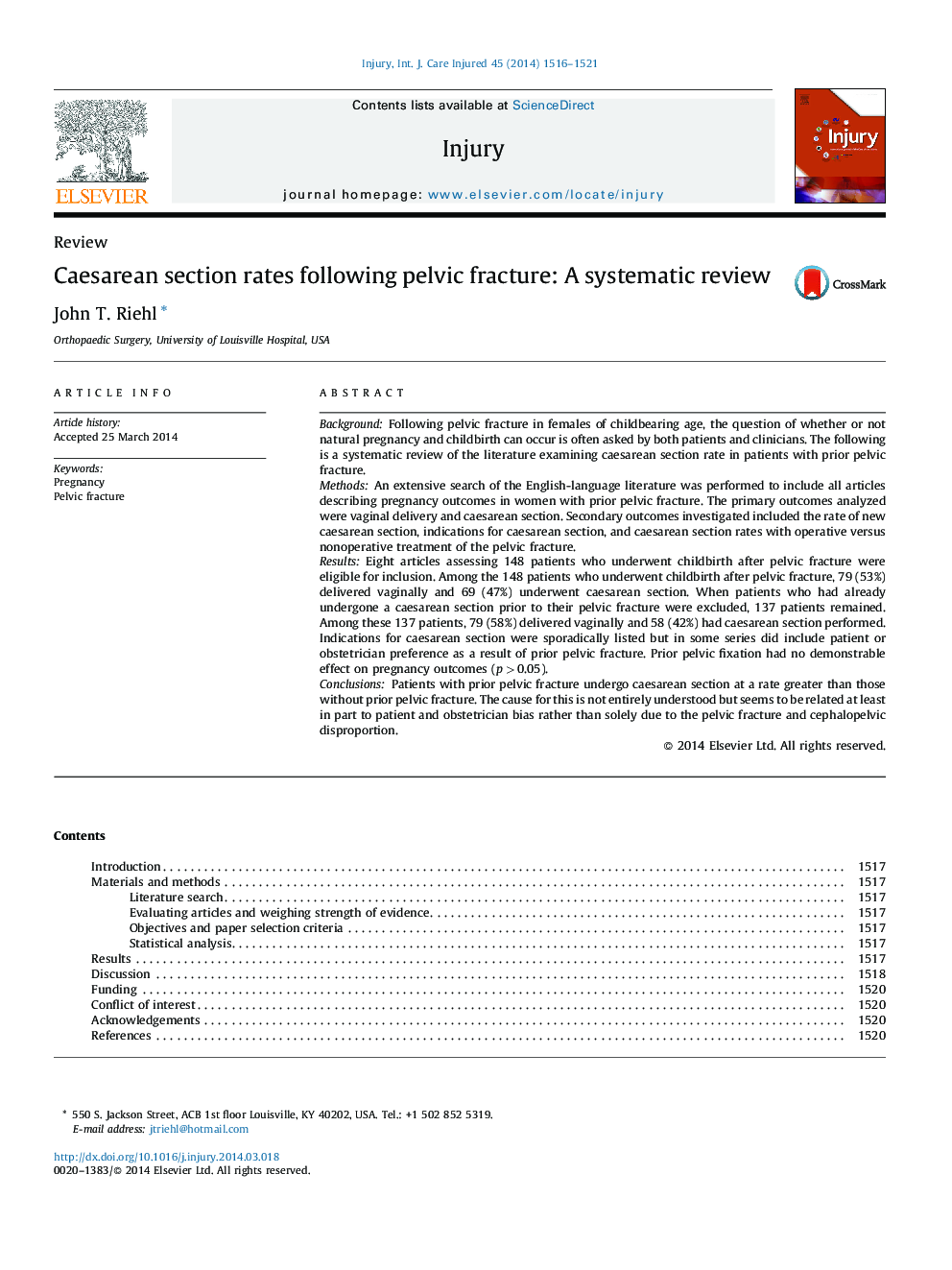| کد مقاله | کد نشریه | سال انتشار | مقاله انگلیسی | نسخه تمام متن |
|---|---|---|---|---|
| 3239500 | 1206008 | 2014 | 6 صفحه PDF | دانلود رایگان |
BackgroundFollowing pelvic fracture in females of childbearing age, the question of whether or not natural pregnancy and childbirth can occur is often asked by both patients and clinicians. The following is a systematic review of the literature examining caesarean section rate in patients with prior pelvic fracture.MethodsAn extensive search of the English-language literature was performed to include all articles describing pregnancy outcomes in women with prior pelvic fracture. The primary outcomes analyzed were vaginal delivery and caesarean section. Secondary outcomes investigated included the rate of new caesarean section, indications for caesarean section, and caesarean section rates with operative versus nonoperative treatment of the pelvic fracture.ResultsEight articles assessing 148 patients who underwent childbirth after pelvic fracture were eligible for inclusion. Among the 148 patients who underwent childbirth after pelvic fracture, 79 (53%) delivered vaginally and 69 (47%) underwent caesarean section. When patients who had already undergone a caesarean section prior to their pelvic fracture were excluded, 137 patients remained. Among these 137 patients, 79 (58%) delivered vaginally and 58 (42%) had caesarean section performed. Indications for caesarean section were sporadically listed but in some series did include patient or obstetrician preference as a result of prior pelvic fracture. Prior pelvic fixation had no demonstrable effect on pregnancy outcomes (p > 0.05).ConclusionsPatients with prior pelvic fracture undergo caesarean section at a rate greater than those without prior pelvic fracture. The cause for this is not entirely understood but seems to be related at least in part to patient and obstetrician bias rather than solely due to the pelvic fracture and cephalopelvic disproportion.
Journal: Injury - Volume 45, Issue 10, October 2014, Pages 1516–1521
